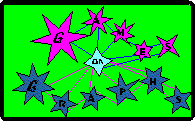


In any branch of mathematics, the mathematical object is the "thing" under consideration. The mathematical object is defined clearly and unambiguously, and it is straightforward to verify whether something is one of those objects or not. The characteristics that an object has are its properties. Mathmatical objects can be classified and sub-classified according to the properties that they do and don't possess, and this is how much knowledge about them is gained.
The foundational four standards of the NCTM (problem solving, communcation, reasoning, and making mathematical connections) are carried out by mathematicians worldwide as they study mathematical objects in terms of their properties. When students begin to see how the study of objects and their properties is common across all branches of mathematics, and when they develop tools for doing this themselves, they can become confident that they can do any kind of mathematics, too. Seeing mathematics in this way can help them to understand how the mathematical results that they learn about may have been discovered, and to go ahead and discover things on their own rather than waiting to be "taught".
The relationships between the parts of a graph are a treasure-trove for seeking patterns and relationships and for spatial reasoning.
When games are associated with stories, the stories show how an abstract mathematical object can be connected to a situation in everyday life in the real world.